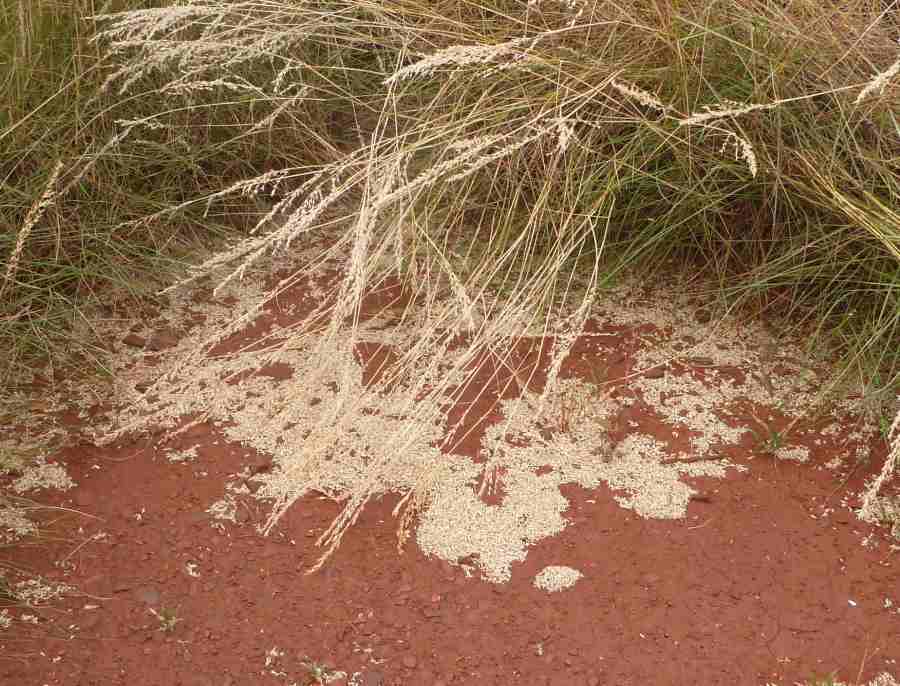Collecting tips

Identification can only be as good as the material available, and is greatly facilitated by field observations and careful collection, ideally including all the following items and plant parts:
- Florets greatly assist identification, and should be specifically targeted, since they fall off at maturity leaving only empty glumes. Hunting around the population may reveal florets on the ground or a plant flowering out of season, so select a plant with best florets – but beware that more than one Triodia species may be growing at the same location! Young florets may be incompletely developed, so if possible collect or observe florets that are nearly ready to dehisce, i.e. when the first florets in the inflorescence have just begun to fall.
- Inflorescences. In the absence of mature inflorescences with florets still intact, older inflorescences with empty glumes are still essential to show inflorescence structure and glume features.
- Vegetative parts should include both young terminal leaves for indumentum, and longest fully mature leaves for length. Leaf appearance (whether dull blue-green or bright green, and whether resinous) should be recorded in the field, on actively growing plants if possible.
- Co-occurring species. When conducting surveys, careful comparison in the field is needed to ensure you have collected all species present, since some species can appear very similar when dry. Conversely, Triodia plants are variable within and between populations, and plants can also vary in appearance with age, fertility and drought stress. Make multiple collections if in doubt.
- Avoid mixed collections. If possible, collect your specimen from a single plant to avoid mixed collections.
- Landscape and soil. Record substrate of the population, especially distinguishing whether it is primarily rocky, sandy, or a heavier soil (e.g. clay, loam, alluvial). The margins of populations often spill slightly onto the adjacent substrate, but a little legwork will establish the most prevalent substrate for the population.
- Location. Record a GPS or map reference. In most cases a rough location is suitable to identify the geographical region, (or regions if close to a boundary). In some cases similar species have non-overlapping distributions but approach within a 10-50 km of each other; in these cases, a more precise location will be useful.
